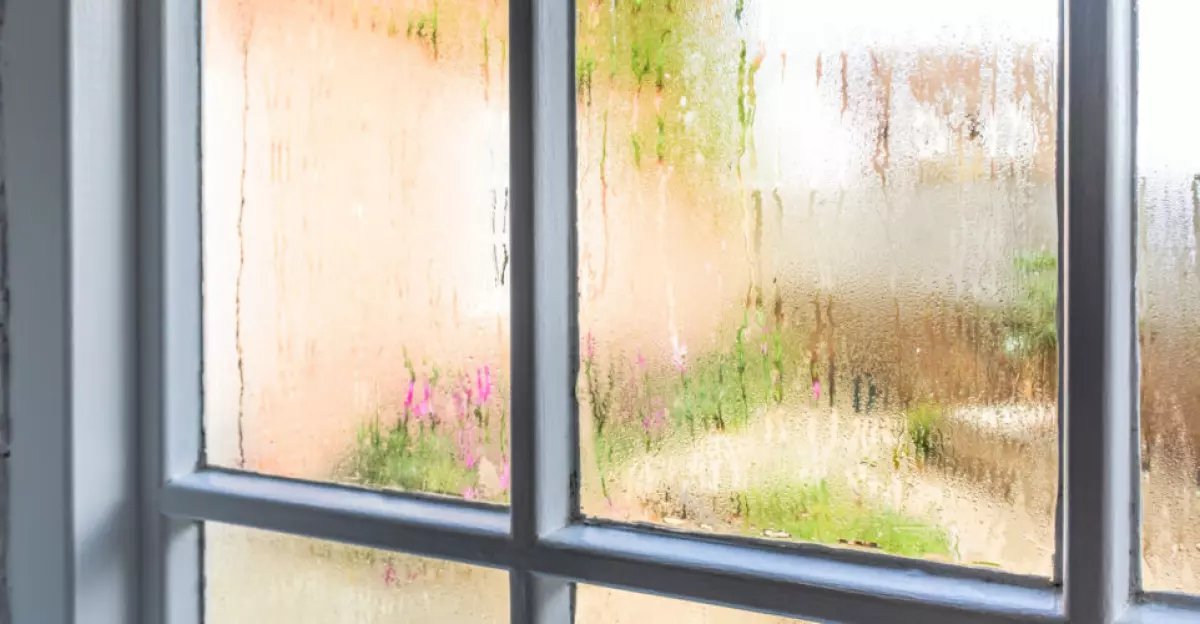 Condensation on an old window of a home. Looking out into the garden.
Condensation on an old window of a home. Looking out into the garden.
Humidity levels inside your home have a significant impact on your daily life, from your health and sleep to the overall integrity of your home. In this article, we will explore the signs and dangers of both low and high indoor humidity levels and provide practical tips on how to achieve the ideal indoor relative humidity.
Signs and Dangers of Low Indoor Humidity
Low indoor humidity, which refers to humidity levels below 30%, can be particularly prevalent during the colder winter months or in drier climates. There are several signs that indicate low indoor humidity:
- Asthma
- Bloody noses
- Cracked or warped wood floors or furniture
- Dry skin, eyes, and hair
- Drying and cracking paint
- Excessive coughing and wheezing
- Frequent colds and sore throats
- Static electricity
Low indoor humidity not only affects your health but also poses risks to the structural integrity of your home. Wood can shrink and damage windowpanes, floors, and furniture.
Signs and Dangers of High Indoor Humidity
On the other hand, high indoor humidity, exceeding 60%, is often experienced during the summer months when warm air holds more moisture. Factors such as reduced ventilation, leaks, poor insulation, and everyday activities like cooking and showering can contribute to excessive moisture levels indoors. Here are some signs of high indoor humidity:
- Condensation on windows, fabrics, and furniture
- Dehydration due to excessive sweating
- Mold and mildew
- Muscle cramps
- Musty odors
- Peeling paint
- Warped wood and furniture
- Water stains on ceilings and walls
- Wood rot
High indoor humidity can trigger allergies and hay fever, as dust mites thrive in such conditions. Prolonged exposure to excess humidity can lead to mold growth, which can cause respiratory problems, skin rashes, and even severe conditions like persistent headaches and insomnia.
What Is the Ideal Indoor Humidity?
The ideal indoor humidity levels depend on various factors, such as individual health conditions and the time of year. The table below provides guidance on the ideal indoor relative humidity you should aim for:
| Circumstances | Ideal Indoor Relative Humidity |
|---|---|
| Winter | 30% - 50% |
| Summer | Below 60% |
| Allergies or Asthma | Below 50% |
How to Achieve Ideal Indoor Humidity
Maintaining the ideal indoor humidity levels is crucial for your well-being and the longevity of your home. Here are some practical steps you can take:
-
Check your humidity level: Use a hygrometer or modern thermostat to measure the humidity level in your home accurately.
-
Increase low humidity: If your indoor humidity is too low, consider the following methods:
- Use a home humidifier or install a whole-house humidifier with the help of an HVAC professional.
- Place indoor plants in your home to improve air quality and increase humidity naturally.
- Utilize natural humidity sources by leaving doors open while showering, air-drying small laundry loads, and reducing the use of exhaust fans.
-
Decrease high humidity: For high indoor humidity levels, try the following approaches:
- Use air purifiers to remove toxins from the air and improve overall air quality.
- Make use of your air conditioning system to remove excess moisture.
- Seal vents, holes, and cracks in basements and crawl spaces.
- Install portable dehumidifiers or a whole-house dehumidifier, depending on the extent of the issue.
- Enhance ventilation by opening windows and running exhaust fans.
Our Recommendation
Maintaining ideal indoor humidity levels contributes to better sleep, overall health, and the preservation of your home's structural integrity. To ensure a comfortable and healthy environment, regularly test your home's moisture levels and address any signs of low or high humidity promptly.
If your home's humidity level is low, consider using a humidifier and sealing any air leaks. In contrast, if your home's humidity level is high, use a dehumidifier and leverage your AC unit to reduce excess moisture.

















